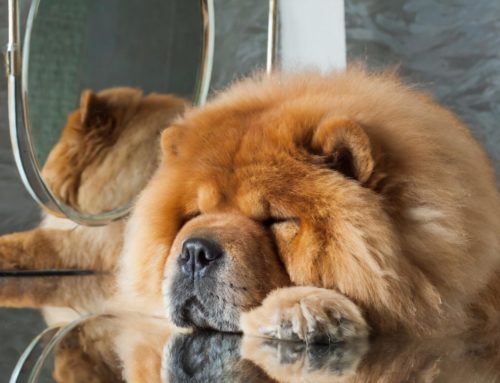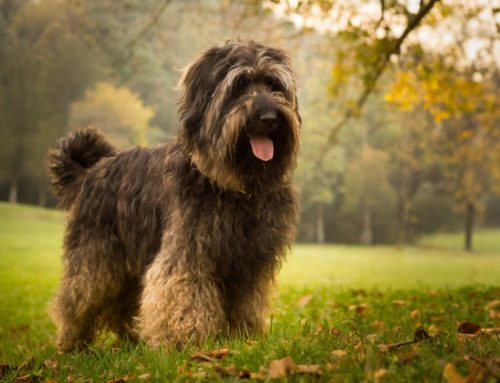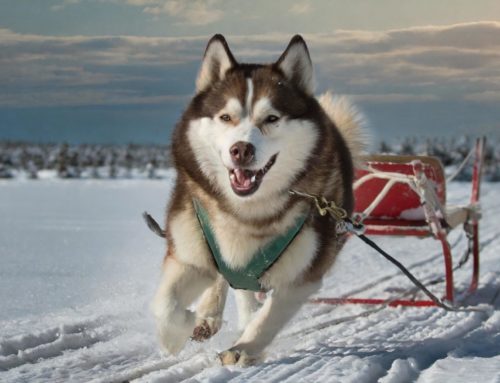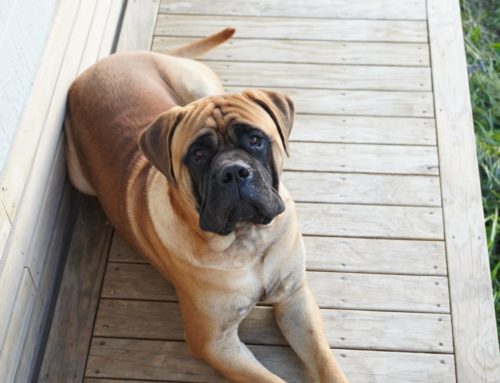
The Brazilian Terrier, known as Terrier Brasileiro, is a species of dog that originated in Brazil and is often associated with the Fox Terrier and the Jack Russell Terrier.
These lively and energetic dogs are known for their playful and cheerful nature. These terriers can often be seen on the streets of Rio de Janeiro and other Brazilian cities, where they developed into the breed we know today.
The history of the Brazilian Terrier began in the 20th century, when the original Fox Terriers, brought by European immigrants, were crossed with local dogs in Brazil. This crossbreeding resulted in a breed with a unique appearance and temperament.
FCI breed group 3 Terriers
The Brazilian Terrier, also known as the Brazilian Terrier or Fox Paulistinha, is a charming and lively breed of dog that originated in Brazil. This breed is part of the FCI group, where it is recognised as an authentic Brazilian breed. With their short, smooth coat, which is usually white with black or brown markings, they are a striking sight.
These dogs are known for their energetic and playful nature. They are often seen on the sunny streets of Brazil, where they are known for their liveliness and agility. Their images are popular on stock photos and Pinterest, often praised for their cute looks and happy attitude.
Coat and appearance of the Brazilian terrier
An active and lively companion dog, the Brazilian Terrier has a distinctive appearance that sets it apart from other dog breeds. With a shoulder height ranging from 32 to 40 cm and a weight of around 10 kg, this medium-sized dog stands out for its slender build and alert attitude.
The Brazilian Terrier’s coat is short, smooth and fine, usually white with black, reddish-brown or blue markings, especially above the eyes and around the muzzle. These dogs often have prominent tricolour markings, including brown spots. Their ears are triangular and set wide apart, contributing to their distinctive expressive face.
Raised in Brazil in the 19th century, these dogs were originally intended for hunting and guarding homes. Their hunting instinct makes them excellent at chasing rodents and other small prey. Despite their size, they are good guard dogs, alert and protective of strangers, but at the same time affectionate and playful with their families.
Common hereditary diseases and disorders
- Hip dysplasia: A common condition in dogs, in which the hip joint is abnormally developed, which can cause pain and arthritis.
- Allergies: These can be either environmental (such as pollen or dust mites) or food-related.
- Patellaluxation: A condition in which the kneecap (patella) can easily shift out of its normal position.
- Ear infections: Due to their shaped ears, Brazilian Terriers can be more susceptible to ear infections.
- Dental problems: Like many small breeds, they can be prone to dental problems, including tartar and early tooth loss.
- Skin problems: Skin conditions, including eczema or dermatitis, can occur, often due to allergies.
- Eye disorders: Certain eye problems such as cataracts or progressive retinal atrophy may occur.
- Epilepsy: A neurological disorder that can lead to seizures.
The character of the Brazilian terrier
The Brazilian Terrier, officially recognised by the FCI since 1995, is a very active and energetic dog, native to Brazil. This breed is known for its short coat, which is mostly white with black and tan markings. The coat requires little maintenance, which contributes to the breed’s popularity among Brazilian households.
Raising and training a Brazilian Terrier puppy requires a consistent approach. These dogs are intelligent and learn quickly, but their energetic and sometimes dominant nature requires them to be well socialised and trained from an early age.
They are known for their affectionate nature and get along well with other pets, provided they get used to them early on. Originally bred to hunt, these dogs still retain their hunting instinct and genetic disposition.
Their energy will do well in a home with a garden, where they can run and play. Because of their energy level and need for mental stimulation, it is recommended that they are placed in an active household where they get plenty of exercise and supervision.
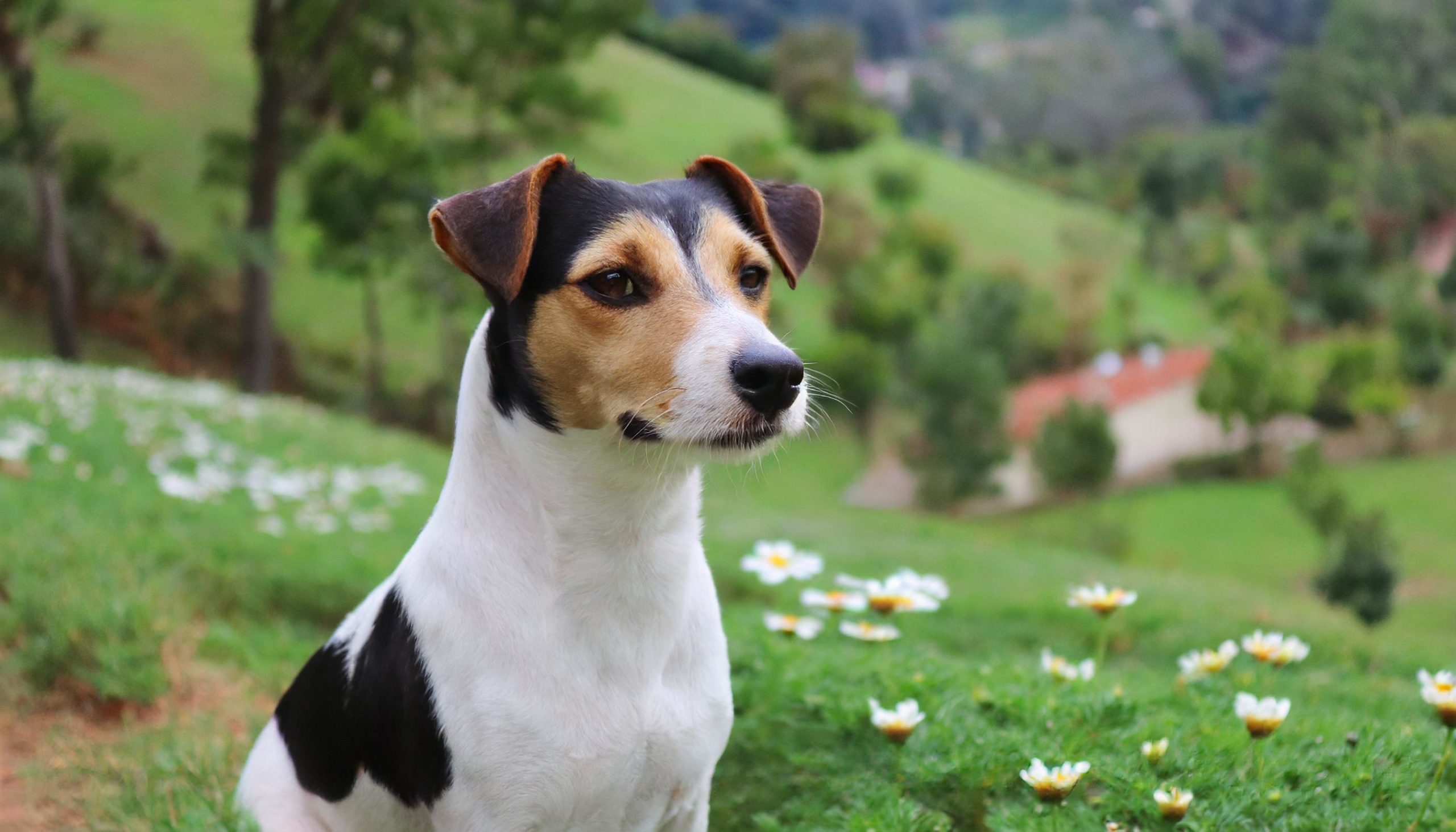
The Care of the Brazilian terrier
The Brazilian Terrier, a breed officially recognised and common in Brazil, requires simple but consistent grooming. Their coat is short, usually white with black and sometimes blue colour markings. Coat care is relatively simple, regular brushing is sufficient to keep the coat nice and healthy.
Because of their energetic nature, it is important that these dogs get plenty of exercise. They are very playful and enjoy playing with their owner or other dogs.
A Brazilian Terrier gets along well with other dog breeds and is often affectionate towards its family. It is important that these dogs are well socialised right from puppyhood, something breeders often start with.
Socialisation and upbringing of the Brazilian terrier
The Brazilian Terrier, a breed officially recognised in Group 3 of the FCI, is known for its energetic and affectionate nature. Descended from ancestors such as the German Pinscher and presumably the Chihuahua, these dogs were developed in Brazil and enjoy an energetic life in their homeland.
Proper socialisation and upbringing are crucial for these lively dogs. Brazilians are known for their love of dogs and the Brazilian Terrier is no exception. From an early age, it is important to introduce the puppy to different people, situations and other dog breeds. This helps to form a well-socialised and balanced dog.
Given their energetic nature, it is essential to give these dogs enough exercise so that they can release their energy properly. Playing with other dogs or interactive games with the owner are excellent ways to keep them stimulated both physically and mentally.
How much experience does a Brazilian terrier require
The Brazilian Terrier, with its lively and energetic nature, is a breed that can be kept by both experienced and inexperienced dog owners. However, for inexperienced owners, it is important to understand that these dogs need consistent training and plenty of exercise to properly expend their energy.
These terriers are intelligent and learn quickly, which can make the training process easier. But their sometimes stubborn nature requires a patient and firm approach. For inexperienced owners, it can be useful to participate in obedience training or attend a dog training course to gain the necessary skills and knowledge.
For experienced dog owners, the Brazilian Terrier can be a joyful and challenging companion. Their ability to learn quickly and their need for regular physical and mental stimulation makes them suitable for various dog sports and activities.
Is training necessary with the Terrier Brasileiro
Training is absolutely necessary for the Brazilian Terrier, an energetic and intelligent dog breed. These dogs are known for their liveliness and have a strong need for mental stimulation, which makes training not only useful, but also essential for their well-being.
The Brazilian Terrier is quick-witted and responds well to positive training methods. Consistency in training is important to keep their attention and harness their natural curiosity and intelligence. These dogs love to learn and are often eager to master new commands and tricks.
Besides basic obedience, it is also crucial to socialise these terriers from an early age. They need to learn to interact with different people, animals and situations. This helps develop a balanced and confident character.
How much exercise does a Brazilian terrier need?
The Brazilian Terrier, known for its lively and energetic nature, needs a considerable amount of exercise daily to stay healthy both physically and mentally. These active dogs thrive on interactive and stimulating activities and ideally need at least one to two hours of exercise a day.
This exercise can include walks, running, games such as fetch, and other activities that can accommodate their high energy levels. It is also advisable to add variety to their daily routine to avoid boredom. For example, consider walking routes with different environments or introducing new games.
In addition, it is essential for a Brazilian Terrier to receive mental stimulation in addition to physical stimulation. Training sessions, agility sports, and intelligence games can keep their minds sharp and contribute to feeling fulfilled. A lack of exercise can lead to behavioural problems such as destructive behaviour, excessive barking and hyperactivity.
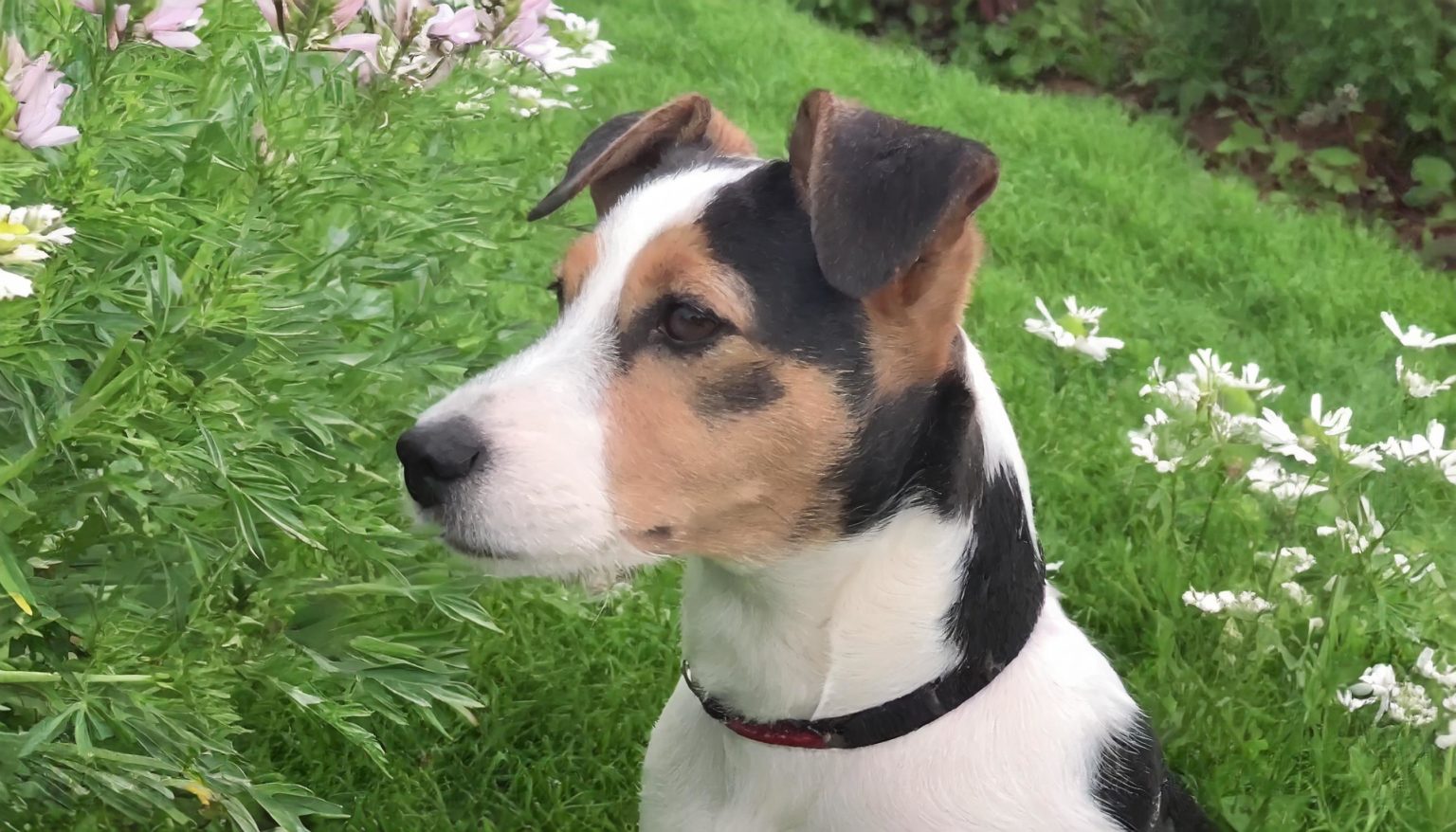
How it gets along with children and other pets
The Brazilian Terrier is known for its playful and energetic nature, which often makes it an excellent companion for children. These dogs are usually friendly and get along well with children and other pets, provided they are properly socialised and trained.
Their lively nature and love of games make them a cheerful and active friend for children who enjoy playing outside and having adventures. However, it is important to teach both dog and children how to interact in a safe and respectful manner.
Supervised play is essential, especially with younger children, to ensure that both dog and child do not get too rough and respect boundaries.
Brazilian Terriers can also sometimes have a strong hunting instinct, so it is important to teach them from an early age not to chase smaller pets or fast-moving objects, something that can occur with playing children.
Benefits of a Brazilian terrier
- Energetic and Playful: They are very active and playful, ideal for active families.
- Intelligent: Brazilian Terriers are smart and learn quickly, which makes them easy to train.
- Affectionate: They are very affectionate and form a strong bond with their family.
- Watchful: Good watchdogs that will quickly bark at unfamiliar situations.
- Small Size: Their compact size makes them suitable for smaller living spaces.
Disadvantages of a Brazilian terrier
- High Energy Level: Require a lot of exercise and mental stimulation.
- Can Be Stubborn: Can be challenging in training due to their stubborn nature.
- Hunting instinct: Have a strong hunting instinct, which can cause problems with other small pets.
- Needs Social Environment: Not suitable to be left alone for long periods; can lead to destructive behaviour or barking.
- Prone to Separation Anxiety: Have a strong tendency to become attached to their owners and may suffer from separation anxiety.
Life expectancy of these dogs
Known for its energetic and lively nature, the Brazilian Terrier has a relatively long life expectancy compared to some other dog breeds. On average, these dogs can live for around 12 to 14 years. Of course, this depends on several factors, including genetics, living conditions, and especially the healthcare they receive throughout their lives.
Price of a Brazilian terrier
You might spend between $1,500 and $3,000 for a Brazilian Terrier puppy from a reputable breeder.
Price Influencing Factors:
- Breeder’s Reputation: Higher prices for puppies from well-known breeders with a history of champion or working Brazilian Terriers.
- Pedigree: Registered Brazilian Terriers with the American Kennel Club (AKC) will fetch a higher price than those without papers.
- Geographical Location: Expect higher prices in regions with a higher cost of living.
- Age of the Dog: Puppies typically cost more than adult Brazilian Terriers.
- Coat Color: With a broad acceptance of coat colors, this factor doesn’t heavily impact the price.
Breeds with Similar Traits:
If you’re drawn to the Brazilian Terrier’s energetic nature and manageable size, consider these breeds:
- Jack Russell Terrier: Known for their high energy and devotion, with prices usually ranging from $800 to $2,000. They share a comparable hunting drive and need for stimulation.
- Rat Terrier: A lively and loving breed valued for their agility and willingness to learn, typically costing between $800 and $1,500. They share the Brazilian Terrier’s need for exercise and mental engagement.
- Smooth Fox Terrier: Independent and playful, with a price range similar to the Brazilian Terrier. Notable for their spirited character and potential stubbornness, necessitating experienced handling.
Additional Considerations:
- Research is Key: Brazilian Terriers are bright and active; ensure you’re ready to meet their needs for engagement and vocal expression.
- Visit the Breeder: Assess the health and temperament of potential puppies by meeting them and their parents at the breeder’s location.
- The Importance of Early Training: These intelligent dogs thrive with early socialization and positive reinforcement training methods.
- Exercise Requirements: Adequate daily activity and mentally stimulating exercises are essential for their well-being.
Locating a Brazilian Terrier Breeder:
- Brazilian Terrier Club of America: A resource for finding reputable breeders, though ensure direct contact for up-to-date information.
- Online Kennel Directories: A useful tool for finding breeders within your area. Ensure thorough research and direct communication.
Commitment to Responsible Ownership:
Choosing to welcome a pet into your home is a significant decision. While purchasing from a breeder is an option, adopting from shelters or rescue organizations provides a loving home to dogs in need, potentially at a lower cost. Open your heart to the possibility of adopting a Brazilian Terrier or a similar breed, enriching both your lives.
